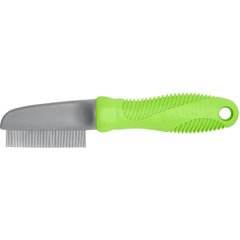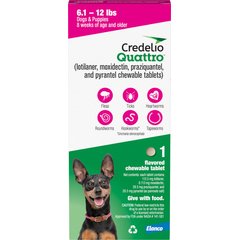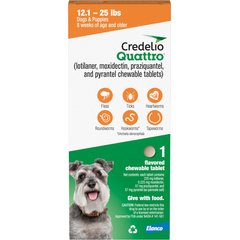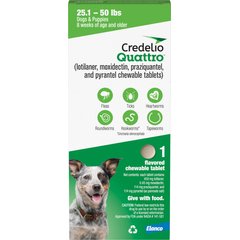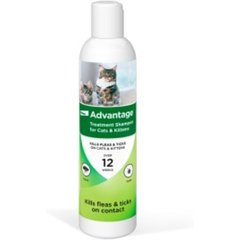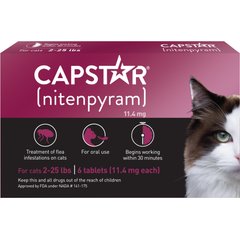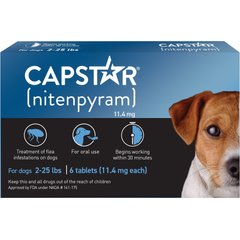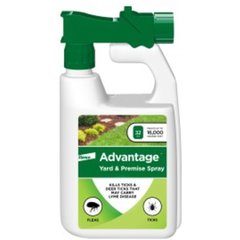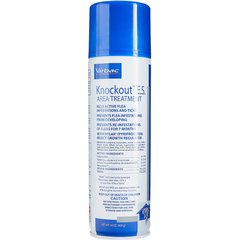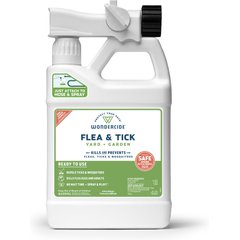What Is Flea Dirt, and How Do You Get Rid of It?
Chalabala/iStock / Getty Images Plus via Getty Images
Whether or not your pet is itchy, flea dirt is a telltale sign that your furry family member has fleas.
Flea dirt appears as small black specks on your pet’s skin and in their fur. It can easily be confused with other skin conditions, such as scabbing from allergies in dogs or debris from ear mites in cats.
Let’s learn how to tell the difference.
Key Takeaways
- Flea dirt is not actually dirt—it's waste that contains digested blood from the flea’s host.
- Flea dirt does not directly cause disease, but it is a sign of a serious flea infestation.
- Ask your veterinarian about veterinary-approved flea prevention medications, such as Credelio Quattro.
What Is Flea Dirt?
Flea dirt is not dirt, but flea waste material (flea poop) that also contains digested blood from the flea’s host (a cat or dog). Flea dirt looks like black pepper.
Finding flea dirt on your four-legged companion means they have fleas, and the unwanted pests have been there long enough to consume and digest a blood meal.
Flea dirt itself is not harmful, but it is an indication of a flea problem, which can be harmful to humans and pets.
While cats and dogs are common hosts, flea dirt can also be found on rabbits, guinea pigs, ferrets, and other warm-blooded mammals, including local wildlife like squirrels, raccoons, and opossums.
If your pet is itchy and you see flea dirt, it confirms that fleas are present.
They may be hiding in your cat’s thick fur or in the crevices of your dog’s ears or tail base, or in any other warm, dark area of their body.
Can Flea Dirt Cause Disease in Pets and Humans?
Flea dirt does not directly cause disease, but it is a sign of a serious flea infestation. Finding flea dirt early can help you address the flea problem before serious health issues occur.
The fleas that produce the flea dirt can carry diseases that are dangerous to pets and people.
Fleas can transmit several diseases, including:
-
Flea-borne typhus
In addition, some dogs and cats are allergic to flea saliva and develop flea allergy dermatitis (FAD), an intensely itchy reaction to flea bites.
Since fleas ingest blood, a severe infestation can lead to anemia, especially in young puppies and kittens.
What To Do If You See Flea Dirt
If you suspect your pet has flea dirt, use this easy trick to confirm:
-
Using a flea comb or other fine-toothed comb, brush the area where you see black specks to remove some specks and any loose hair or skin debris.
-
Wet a plain white paper towel and place the debris and suspected dirt on it (color is important for visibility.)
-
Crush the black debris into the wet white towel. If red staining appears, the debris is flea dirt.
Once you confirm the black specks are flea dirt, you should start treatment to eliminate the fleas.
Thoroughly brush your pet and bathe them to remove as much flea dirt (and as many fleas) as possible.
Ask your veterinarian about veterinary-approved flea prevention medications, such as Credelio Quattro.
Quattro is the only monthly chewable tablet to protect against:
-
Ticks
-
Fleas
It also protects against six types of parasites (including three species of tapeworm), and contains lotilaner, which kill ticks two times as fast as sarolaner in Simparica Trio and afoxolaner in NexGard.
How To Get Rid of Flea Dirt
If you see flea dirt, check all your pets and their favorite resting spots for fleas. Even if you don’t see any fleas, the presence of flea dirt confirms they are hiding somewhere.
The safest way to remove flea dirt from your pet is bathing them with Dawn dish liquid or a species-specific flea shampoo.
Be careful when choosing a shampoo—some products labeled for treating fleas in dogs are toxic to cats.
Using a flea comb during bathing can help remove fleas. You can also ask you veterinarian about Capstar, an oral medication that begins killing fleas shortly after administration and is active for 24 hours.
Next, you’ll want to use a veterinary-approved flea prevention medication to kill any remaining fleas and prevent reinfestation.
Oral and topical products are available; however, topical products must be applied 48 hours before or after bathing.
Over-the-counter flea collars are not effective at ridding your pet of flea dirt or fleas, but you can ask your veterinarian about a prescription flea collar.
Most products are effective against adult fleas, flea eggs, and larvae, but they are not effective against the pupal stage.
Because the pupae will remain in the environment and hatch into adults, it can take several months of diligent work to eliminate all fleas from the environment.
Treating all pets in the house and eliminating fleas from your home and yard are essential steps to prevent reinfestation. If the flea dirt persists despite your efforts, contact your veterinarian for assistance and consider calling an exterminator for additional help.
How To Prevent Fleas and Flea Dirt on Pets
The easiest way to prevent flea dirt is to prevent your pet from getting fleas. Using year-round flea prevention is the most reliable way to prevent fleas.
Flea preventatives last anywhere from 30 days to 12 weeks. Adding additional prevention with a flea collar or regular bathing can also help.
Flea repellents, such as Wondercide spray, can also aid in keeping your pets, your home, and your yard flea-free.
If you have wildlife or small mammals in your yard, routine flea extermination may be needed to prevent these parasites from infesting your pets.
Flea Dirt FAQs
Why do I see flea dirt but no fleas?
If you see flea dirt on your pet but no fleas, the fleas may have recently been removed by grooming, bathing, or administration of flea prevention medication.
Even though you might not see fleas, finding flea dirt means your pet has fleas or that fleas are in their indoor and/or outdoor environment. Treatment should begin as soon as possible for all pets and their indoor and outdoor environments.
Does flea dirt mean an infestation?
Most of the time, flea dirt is an indication of a flea infestation. Fleas must be present long enough to take a blood meal for flea dirt to be present.
Most fleas will defecate flea dirt while they ingest blood from the host.
How do you get rid of flea dirt?
To get rid of flea dirt, bathe your pet in Dawn dish liquid or a species-specific flea shampoo. Using a flea comb can also help remove flea dirt. You can also ask your veterinarian about Capstar, an oral, short-acting medication that begins killing fleas within an hour of administration.
To prevent reinfestation, use a veterinary-approved flea prevention medication year-round.
Ultimately, you must treat all pets in your home and their environment to successfully get rid of fleas and flea dirt.
Is flea dirt harmful to humans?
Flea dirt itself is not harmful, but it is an indication of a flea problem, which can be harmful to humans.
Fleas can transmit many diseases, such as cat scratch fever, tularemia, and typhus, to pets and people.

